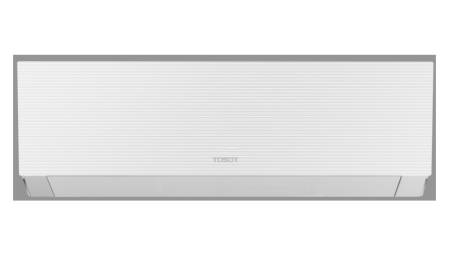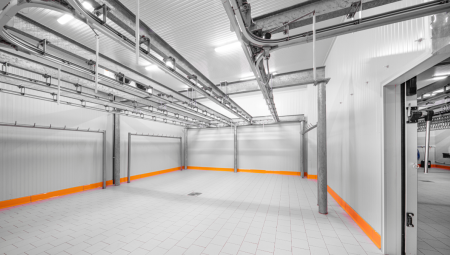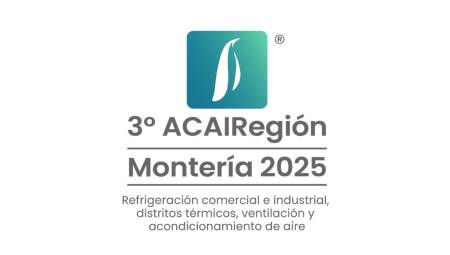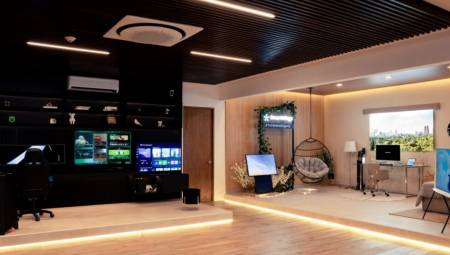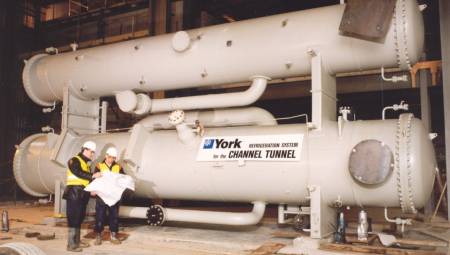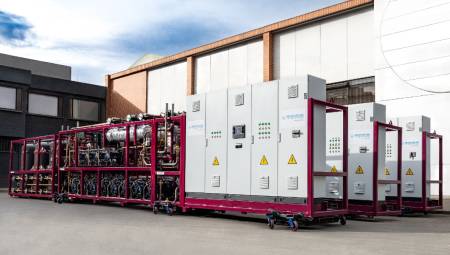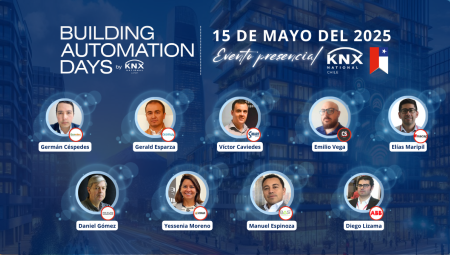by Alfredo Sotolongo
As I well informed you in previous articles of the OPINION section, because of problems that we all know such as the high cost of fuels and the conservation of the environment, private enterprise has dedicated considerable economic resources as well as time to the development of new systems and products for energy conservation. I can tell you that almost every day something new is developed and therefore, something new is learned.
On this occasion I want to refer to the central plants of ice water. It is important to understand how technology was applied to the challenges of the 50s and the reasoning behind those decisions in order to evaluate and appreciate the concept of how to obtain the maximum possible efficiency in these facilities.
Until very recently the different teams that made up the central plant were:
* Chiller.
* Cooling towers.
* Ice water pumps.
* Condensation water pumps
They were controlled independently of each other and it was about them operating as efficiently as possible.
In the 50s almost all systems were of constant volume, since the benefits of variable volume were not known nor had equipment been developed to control the volume of air or water. The capacity of the air conditioning systems was controlled with three (3) way valves in the air handlers and these modulated the amount of water by preventing it from passing through the coil of the handler and returning it to the cooler. When that mass of ice water, which did not pass through the coil of the handler, returned to the cooler at a temperature that approached the one that had come out, the controls of the cooler reduced the capacity of the same and at that moment began to reduce the energy consumption in the cooler.
The problem this represented was the time it took for the water to return to the cooler so that the cooler controls could record the temperature value and adjust the capacity. The same thing happened with the other components, since the condensation water did not change its temperature value until the cooler was not adjusted.
At the end of the 50s and beginning of the 60s, with the purpose of reducing the reaction time, primary pumping began to be used with constant volume, but varying the volume in the circuit that fed the air handlers (which we could call secondary circuit of ice water); for this, two-way valves were used, which when the temperature in the handler was satisfied closed the valve and reduced the flow of water to the coil and being the ice water pump of constant volume increased the pressure differential in the pumping system. By means of a differential pressure controller, a two-way valve located in a recirculation pipe (by-pass) that connected the return pipe with the supply pipe was controlled.
By increasing the pressure differential between return and supply, the two-way valve opens to recirculate ice water through the cooler. When the chiller controllers detected that the return temperature of the water was approaching the supply temperature, they adjusted the capacity and at that moment began to reduce energy consumption. Once the capacity of the cooler was reduced, the temperature controls of the condensing water detected the decrease in the temperature value of the condenser return water and thus controlled the capacity of the cooling tower. This improved reaction time for the cooler and cooling tower, but did not save energy on any other component of the system.
Although the benefits of the affinity laws of fluids driven by rotating equipment were already known, it was not until the early 80s that the use of variable frequency drives (VFDs) to modulate the revolutions of equipment such as fans and water pumps in commercial air conditioning systems was developed and financially justified.
Once the variable frequency drives (VFD) began to be used, it was also possible to save energy in the fans of the air handlers, in the water pumps and in the fans of the cooling towers, which made the central ice water plants more efficient. The chillers worked with constant volume of water, while the system consisted of two pumping systems for the ice water, one of constant volume for the cooler and another of variable volume for the distribution network.
The pumping system for the distribution network or secondary system, also uses two-way valves in the handlers and when these valves are closed the pressure differential increases between the supply and return pipes, and the pressure differential controller modulates the frequency inverter to adjust the revolutions of the pump motor and thus reduce consumption exponentially.
With all these advances achieved in the 80s, the consumption of the different equipment that make up the central ice water plant has been reduced and the reaction time has been reduced, although each equipment is controlled independently. This means that the central plant as a whole does not operate at maximum efficiency as its components do not operate in harmony with each other.
Within this group of companies that are constantly in search of more efficient systems and that try to minimize the reaction time of central ice water plants is S.A Armstrong, which has developed a comprehensive control system that achieves that all components work in harmony using Hartman control cycle technology which is based on three principles:
1. The natural curve of the behavior of the cooler.
2. The behavior of each component in relation to the capacity of the system.
3. Control based on the demand of the system at all times.
We are talking about controlling the components of the central ice water plant as follows:
to. Cooling towers – preferably multi-cell varying air volume.
b. Condensation water pumps – varying the water flow through the cooling tower.
c. Primary ice water pumps – varying the volume of water through the cooler. No secondary pumping is required.
d. Water cooler – modulating its capacity and reacting to the variable volume of water in the primary circuit.
Today it is possible to achieve that all the equipment that makes up the central ice water plant is positioned at its optimum point of efficiency for each level of thermal load of the air conditioning system. In our tropical countries, in addition to changes in thermal load inside buildings, there are changes in external conditions, it is almost always the presence and absence of the sun that causes changes in the dry and humid bulb of the outside air.
In other words, the comparison of the outside air conditions with the temperature of the inlet water to the condenser and the thermal capacity of the air conditioning system must match the electrical consumption for those specific load conditions and if not, the control system would adjust the operating condition of all components to achieve the optimal value of electricity consumption per corresponding thermal load.
In conclusion, what has been achieved with these new applications of control methods is that by working all the equipment that makes up the central ice water plant in harmony, the reaction time to changes in thermal load has been considerably reduced, minimizing energy consumption. This has represented complete plants with water condensation trying to average annual consumption as low as 0.45 Kv/Ton (7.8 COP).


